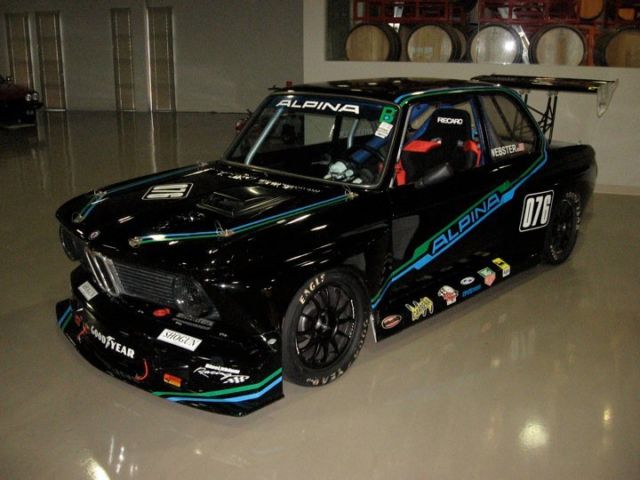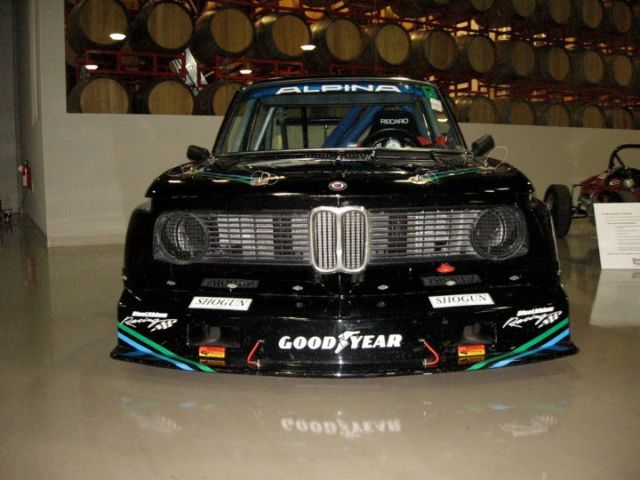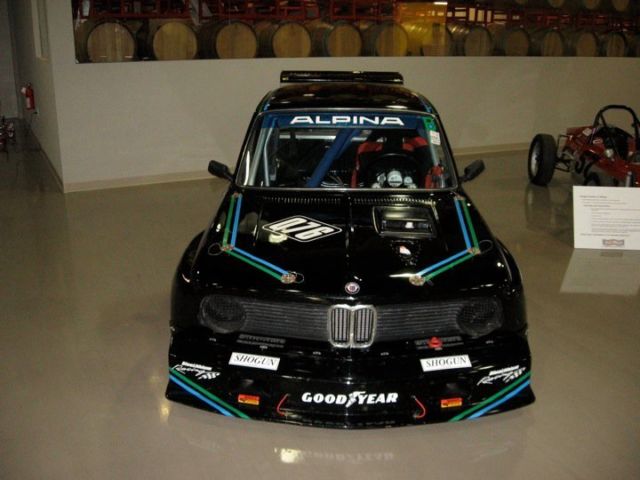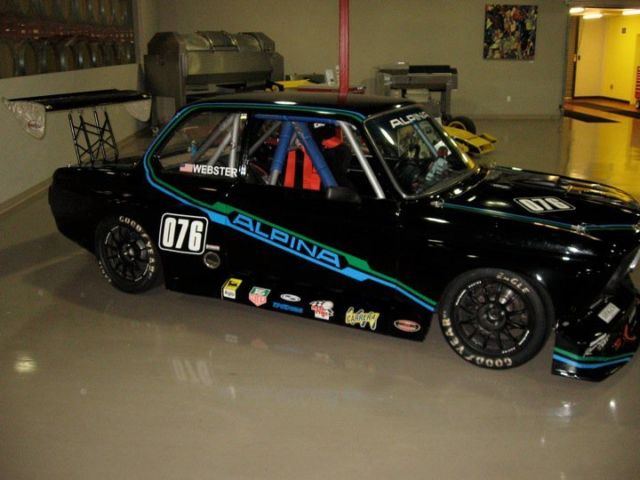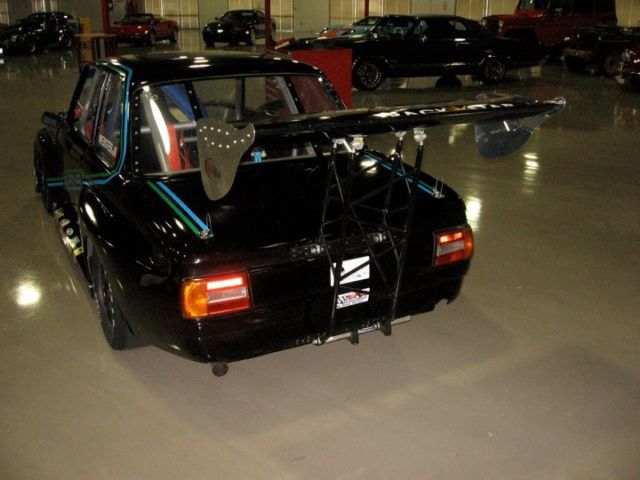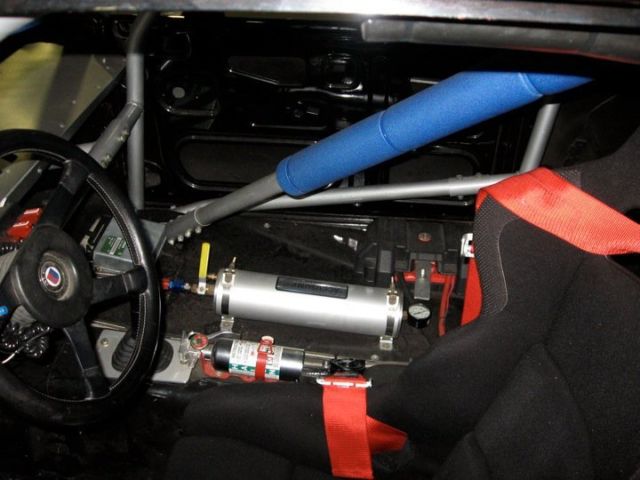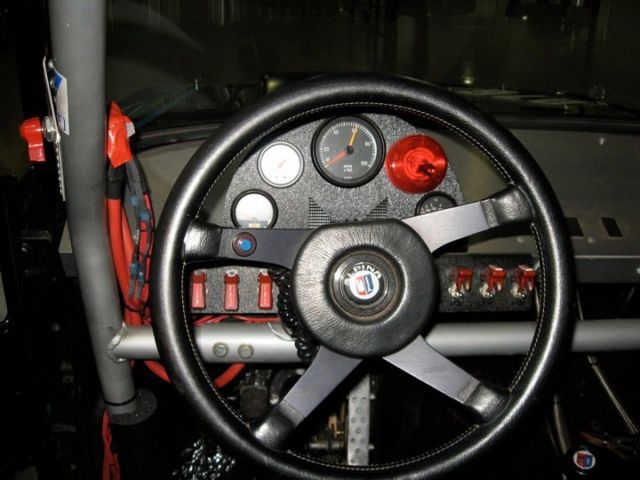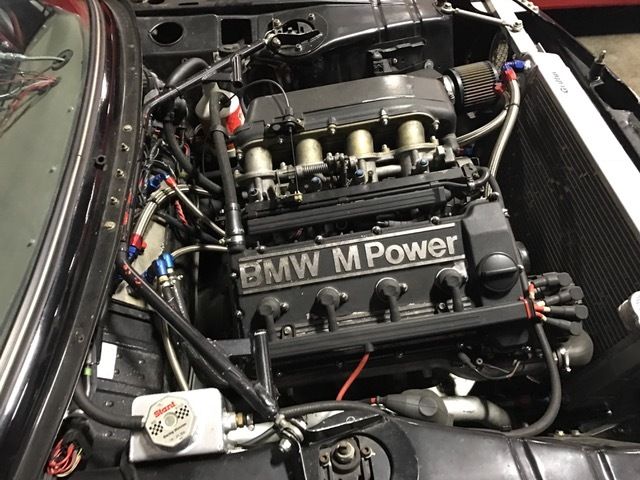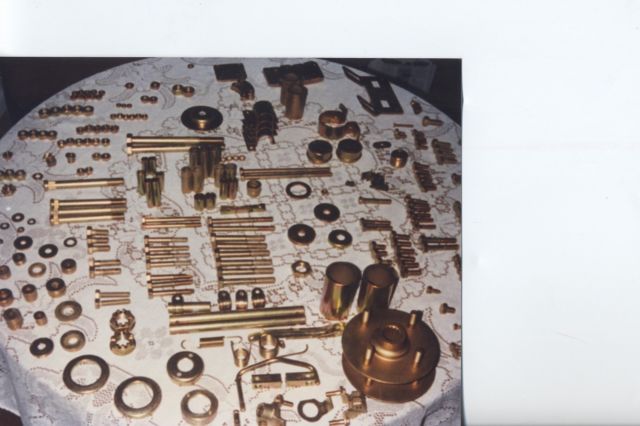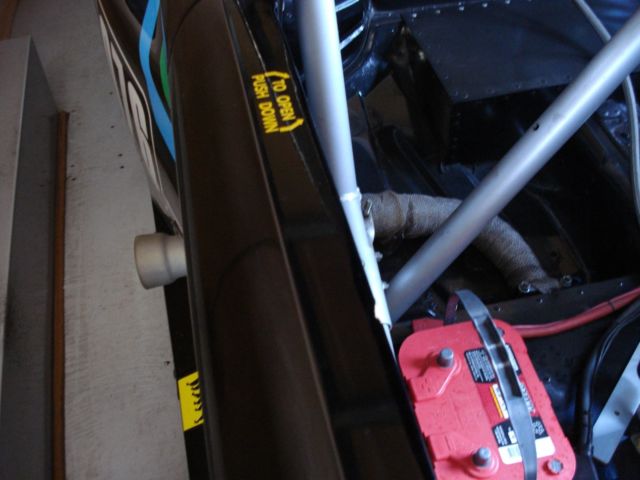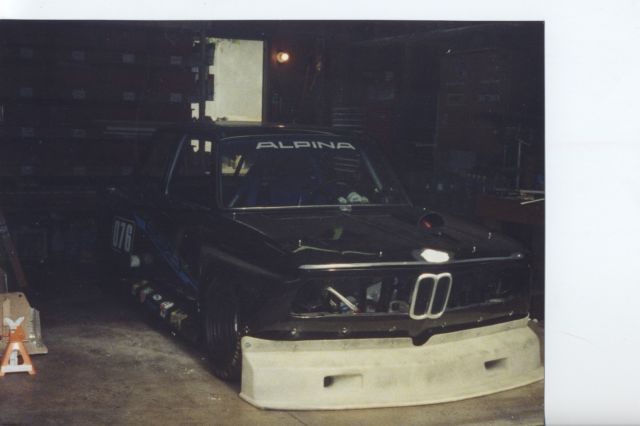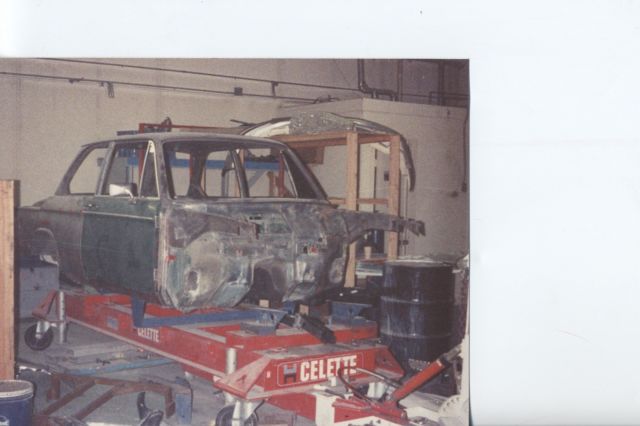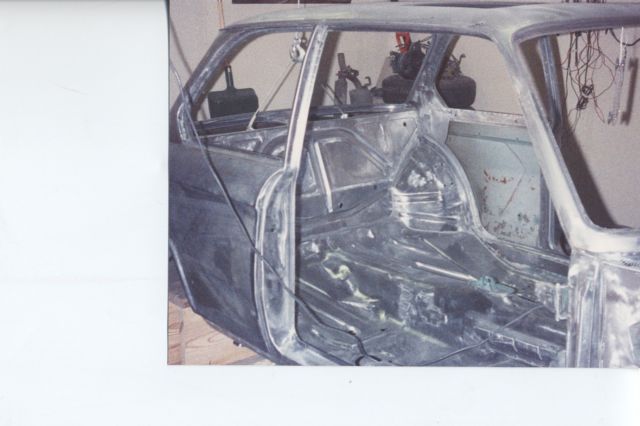1976 BMW 2002 Race Car
- Condition: Used
- Make: BMW
- Model: 2002
- SubModel: Custom
- Type: Coupe
- Trim: Custom
- Year: 1976
- VIN: 2391558
- Color: Black
- Engine size: 2.5L
- Number of cylinders: 4
- Fuel: Gasoline
- Transmission: Manual
- Drive type: RWD
- Interior color: Black
- Vehicle Title: Clear
- Interested?
1976 BMW 2002 Custom Description
The history of this car exists in two parts. The owner who originally converted it into a track car, and mine. Listed below is narrative from the guy who did the original build. After that, I description of the work I had done to it subsequent to acquiring the car.This is accurately classified as a "track car" at the moment. In order to obtain a log book and qualify for sanctioned racing, a new cage would have to be fitted, at a minimum. The wall thickness of the tubing in use no longer meets the minimums (it used to) used by NASA and SCCA. But do that, and you'll have one of the coolest vintage cars out there.
Narrative from original fabricator:
1976 BMW 2002
This car started out as my daily driver….it was an automatic with the sunroof. I got interested in autocrossing so I started adding the aftermarket goodies. Every time I found a weak-link, I improved that part and started again. Eventually, I knew I was going to be transferred to California and I knew my car, with it’s dual sidedraft Webbers and headers wasn’t going to be legal in Cal, so I decided to make a full out track car.
Every single part that was bolted to the car came out. I ended up with just the unibody that I then spent 9 months on stripping off all the paint to find any rust. Rusted panels were replaced. New roof was installed to get rid of the sunroof. New frame rails were installed because I discovered that the car must have been hit at some time and the wheelbase was ever so slightly shorter on one side. And everything from the front firewall was also replaced. Car was shot with epoxy primer. Then my mechanic in Tulsa, (ex-IMSA racer) just happened to have a set of flares hanging in his shop that he brought back from Germany. He installed those, I made the side skirts out of aluminum to match the flares and then the car was painted black. I installed a 10 point roll cage of my own design. Std cage but I extended it out to the rear shock towers and also to the front of the frame rails. The car is very stiff. The rear suspension was redesigned using some parts from drag cars so that I could have an adjustable suspension. Trailing arms were boxed and even treated on the inside for rust prevention. The stock bushings were cut off and adjustable rod ends were installed instead. A fuel cell w/ internal surge tank and 2 fuel pumps (one to feed the surge tank) replaced the stock tank. Shocks are adj coilovers, front and rear with camber plates added in the front. Ignition is crank fired. Oil system holds about 9 qts. Oil cooler is built into the custom, oversized radiator. Accusump plumbed in. Plenty of sheet metal was cut from the front to house the largest radiator I could fit in to handle the heat from the supercharger. Runs at a nice 160 degrees with ease. Engine was built by Top End Performance in SoCal to forced induction specs. Wheels were upgraded to run very large racing slicks. No problem for rear clearances, but front fender wells had to be extensively modified to house these tires. Using a raised floor header from Korman…runs through interior of car (under the new custom, raised floor) and exits out the side behind door. Doors were replaced with version from very early model 2002 because they were considerably lighter. Rear windows are Lexan to save weight. Aircraft plumbing throughout. I’m sure I’m forgetting lots of the details, but that should give you an idea of what’s been done to this car. There’s virtually no part than hasn’t been modified to some degree. For me, it was as much of an exercise in engineering as it was to have a fun car to play with at the track. I had seen a picture of an original Alpina race car years ago and I decided that I was going to build one for myself. I achieved that but now that my life is becoming “fuller”, I’m selling off the motorcycles and this car to spend more time with my girl friend, saving for a house, etc. I have well over $40k in this car. Every time I designed and built something, if it didn’t suit my taste after it was done, I’d rip it out and start again.
Tires – keep the Goodyear slicks……you’ll like them. I have a nifty stand that holds a wheel and tire so that you can use a heat gun to soften the rubber that sticks to the tires after a day at the track and then scrape it off. It takes about 30 minutes to do a tire, but you keep your tires in excellent shape that way. Then you just put on Traction Treatment 2 or 3 times a day, starting about 3 or 4 days before the event and your tires are almost like new. I’ve kept tires good for many, many years this way.
Accusump – best bet is to look on their website for a full explanation of how they work. They are designed to help save an engine in case of a catastrophic failure, but with all the extra oil and plumbing, it also means more oil for better cooling.
Crank fired ignition – the ultimate setup…..highly reliable. Made by Electromotive and their website can supply you with any information you’d need. About the only thing you’d ever have to check is the clearance from the sensor to the wheel itself. Dual oil-filters just for extra oil capacity and cooling. Electric water pump.
Wiring – made as simple as possible and left exposed everywhere for ease of tracing circuitry, in needed. Switches – Fuel Pump (pickup located in corner of fuel cell and then it feeds the internal surge tank) Fuel Pump (main pump for engine- pickup is inside the surge tank) Ignition Starter Electric Water pump Fuels pumps are noisy…learn to listen to the tone. If the tone changes, then it might indicate a problem. Both pumps are fairly new. I thought I had a fuel pump problem last month, but everything checked out fine and I found that it was a faulty fuel pressure regulator. A new one was just installed. Do not forget to turn on Electric Water Pump !! I did this once and the engine almost overheated. Luckily, the water pump is very efficient and once on, the temps dropped immediately. You don’t have to think about a water pump on most cars.
Fuel cell holds 12 gallons. Check the Fram fuel filter occasionally…..probably once a year is more than enough. It’s very large capacity, so it can hold a lot of dirt before it would ever clog.
Coil overs…..I set the height to make it low to the ground. When you look at the bottom of the air dam, you’ll see that I just barely scrap the corner of it. If you think the car it too low, it can easily be adjusted higher. Spring rates are good. I can’t think that you’ll need to do any thing there.
Everything is a bolt together design. As I reconstructed the car, I designed all the parts so that I could take them apart and put them back together as easily as possible. There is a red transmission tunnel bracket thing that I fabricated that bolts on under the car, since I had to cut a lot of the floor out for the “raised-floor” header from Korman. And as you’ll see, I’ve even tied this into the roll cage foot plates, so none of these load bearing pieces are just bolted to sheet metal. The car is very stiff with very little body roll. When you drive it, you’ll notice that right away. I think the funnest thing about this car is the way it handles with good rubber. I could run full speed down the front straight at Thunderhill and just barely tap the brakes for about a second before turning in for the left hander. I could gain a lot of ground on people just on this one turn because everyone else had to brake pretty hard and then reaccelerate to the next turn.
My modifications:
I acquired the car in 2007. I purchased a brand new set of Goodyear Eagles and changed the oil to Redline. Right away I had problems with the supercharger. I kept breaking belts, it was a pain. So, my major investment was to build an S14 engine with a VAC 2.5L stroker kit. The core cost about $3K. The total build investment was $12K. In addition to the engine, I changed the fuel pumps. The old one just couldn't keep up with feeding this new engine (and was weak to begin with). I also re-plumbed the exhaust to run under the car, straight out the back. I side exit is super cool and the raised header design does allow the car to run extremely low, but, I run at Laguna quite often. The decibel meter is on the right side of the track as you head uphill to turn 6. I kept blowing sound and causing myself problems. If I were keeping the car, I'd go back to the side exit exhaust and I'd rig a Supertrap setup to mitigate sound. Just my opinion.
I don't have the dyno sheets, but the new engine put out approximately 230 hp. The car is very light and with the EFI, throttle response is stellar. Even with the 5 speed overdrive, you'll now hit the rev limiter at the end of the home straight at Thunderhill. So, it probably needs to be re-geared as well. The new engine has less than 5 hours total time on it. I got busy and then had kids, and hence, no track time. The car has been stored in a temperature controlled, professional storage facility for exotics and race cars. It may need new rubber, but nothing else. Send me a message if you'd like the complete receipts from the engine build. I'm happy to email you copies.
Buyer is responsible for arranging transport of the vehicle (cost and provider). I'm willing to help connect you with transport and organize logistics for pickup. Car is sold AS IS. Everything represented here is accurate to the best of my knowledge. If you'd like to arrange a viewing, car is in Redwood City, CA, just let me know.On Nov-01-16 at 17:17:28 PDT, seller added the following information:
Since several people have asked:
YES the car has a clear, CA title
I am attempting to upload more hi res photos. One side of the car is a little crowded by it's neighbor in storage, so doing the best I can. I'm at the limit of 24 photos and I can't delete previous photos because there are valid bids. If I can host more pics externally, I'll do that and post a URL here.
THIS CAR IS NOT STREET LEGAL. IT IS NOT SUBJECT TO SMOG INSPECTION OR REGISTRATION.
More BMW classic cars for sale
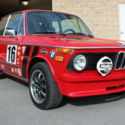 1976 BMW 2002 Tribute Race Car Restoration Classic Vintage Driver Clear Title
1976 BMW 2002 Tribute Race Car Restoration Classic Vintage Driver Clear Title
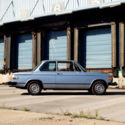 1976 BMW 2002,Absolutely stunning overall condition,Matching numbers 2002
1976 BMW 2002,Absolutely stunning overall condition,Matching numbers 2002
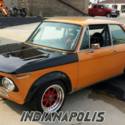 1971 BMW 2002 Race Car
1971 BMW 2002 Race Car
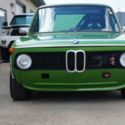 1975 BMW 2002 Race Car NEW ENGINE !!!
1975 BMW 2002 Race Car NEW ENGINE !!!
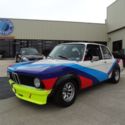 1974 BMW 2002 Race Ready
1974 BMW 2002 Race Ready
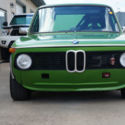 Race Car 1975 BMW 2002 NEW ENGINE !!!
Race Car 1975 BMW 2002 NEW ENGINE !!!
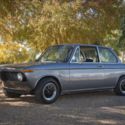 1976 bmw 2002
1976 bmw 2002
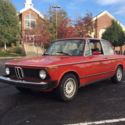 1976 BMW 2002 Automatic
1976 BMW 2002 Automatic
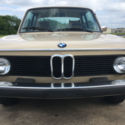 1976 Sahara BMW 2002
1976 Sahara BMW 2002
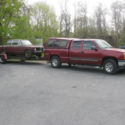 1976 BMW 2002 Parts Car
1976 BMW 2002 Parts Car
 1976 BMW 2002 Tribute Race Car Restoration Classic Vintage Driver Clear Title
1976 BMW 2002 Tribute Race Car Restoration Classic Vintage Driver Clear Title
Year: 1976
Mileage: 90,488
Mileage: 90,488
 1976 BMW 2002,Absolutely stunning overall condition,Matching numbers 2002
1976 BMW 2002,Absolutely stunning overall condition,Matching numbers 2002
Year: 1976
Mileage: 132,517
Mileage: 132,517
 1971 BMW 2002 Race Car
1971 BMW 2002 Race Car
Year: 1971
Mileage: 88,621
Mileage: 88,621
 1975 BMW 2002 Race Car NEW ENGINE !!!
1975 BMW 2002 Race Car NEW ENGINE !!!
Year: 1975
Mileage: N/A
Mileage: N/A
 1974 BMW 2002 Race Ready
1974 BMW 2002 Race Ready
Year: 1974
Mileage: 2,200
Mileage: 2,200
 Race Car 1975 BMW 2002 NEW ENGINE !!!
Race Car 1975 BMW 2002 NEW ENGINE !!!
Year: 1975
Mileage: N/A
Mileage: N/A
 1976 bmw 2002
1976 bmw 2002
Year: 1976
Mileage: 92,441
Mileage: 92,441
 1976 BMW 2002 Automatic
1976 BMW 2002 Automatic
Year: 1976
Mileage: 123,000
Mileage: 123,000
 1976 Sahara BMW 2002
1976 Sahara BMW 2002
Year: 1976
Mileage: 70,538
Mileage: 70,538
 1976 BMW 2002 Parts Car
1976 BMW 2002 Parts Car
Year: 1976
Mileage: 98,235
Mileage: 98,235
